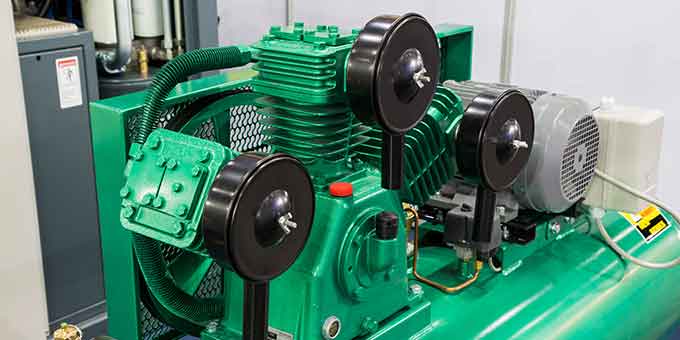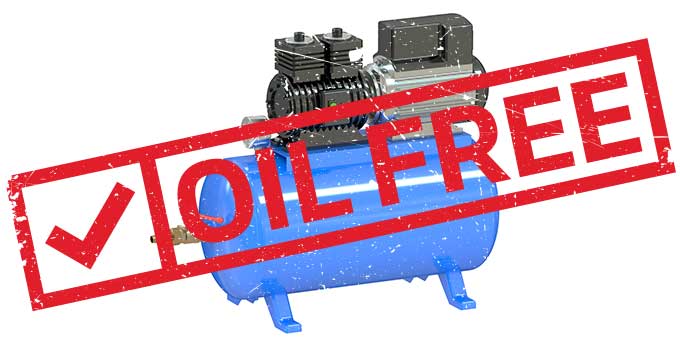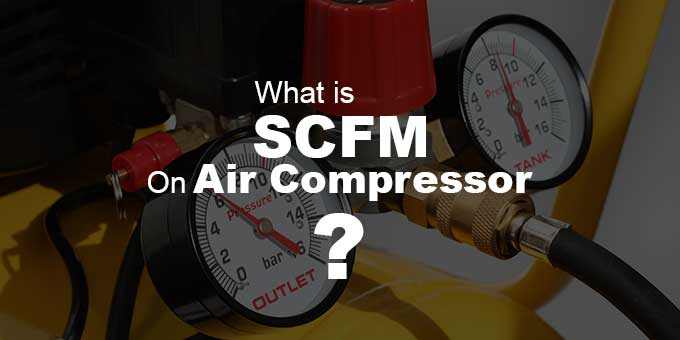The application, kind, and price of an air compressor pump are discussed in this article. An air compressor is a device that uses pressured air to store power. Furthermore, an air compressor compresses air into a smaller volume, which is then used to perform the intended task.
A compressor is a device that is used to pressurize air into vessels, while a pump is a device that transports fluid or air from one location to another. The compressor’s primary duty is performed by the air compressor pump. Whether using the current pump or replacing air compressor pumps, this is an essential component.
People refer to them as air compressor pumps because they transfer compressed air to perform the essential function. They transfer energy from various input sources, such as electricity, fuel, and so on, and retain it as potential energy in compressed air. Since liquids are difficult to compress into tiny volumes, air compressors normally only work with gases.
What Do Air Compressor Pumps Do?
As mentioned above, air compressor pumps help the actual tool to carry out its job. The pump uses various input sources to transfer energy and store it in the air tank as compressed air. These input sources can be gas, fuel, electricity, etc.
How Air Compressor Pumps Work
The compressed air is held in a storage tank once it has been compressed into smaller amounts. The kinetic energy contained in the pressurized air can be employed once the air has been released. Typically, pressure restrictions are specified, and as the air pressure goes below the acceptable level, the compressor pressurizes the air in a methodical manner.
With regards to constant and uninterrupted performance, the compressor can be run automatically. The rotary pump movement or the reciprocating piston is used in air compressor pumps.
What Do You Use Air Compressors for?
Air compressors are utilized in a wide range of applications, including domestic, residential, industrial, machine, and car uses. Certain bicycle pumps, for example, are air compressor pumps that compress air into smaller volumes and pump it into your wheels.
The compressed air then supplies the road’s suspension effect amid pits and bumps. Air compressor pumps are found in a wide range of household equipment, including air conditioners, spray guns, drillers, paint guns, vacuum cleaners, and more.
Drilling, grinding, nailing, painting jobs in body and machine workshops, dry cleaners, sandblasting, vehicle washing, air conditioners, and refrigerators are just a few of the applications air compressor pumps have in workshops and factories.
Air compressors are used in air brakes in cars to provide effective braking. The air braking system decreases a car’s stopping distance and provides greater braking thrust than a traditional hydraulic system, which requires the pedal effort to be sent to the brakes.
They are employed in load-carrying vehicles to raise and carry the cargo with their arms. They’re also utilized to balance huge vehicles when they’re driving through rugged or difficult terrain. These systems can be found in everything from aviation motors to jet propulsion systems.
Furthermore, they’re also employed in power plants, manufacturing businesses, water purification plants, paint shops, and irrigation systems, among other things.
Types of Air Compressors
The kind of compression stages, operation, maximum pressure required, pump power, and other factors are used to classify air compressors. Let’s take a quick look at the many types of air compressors.
Air compressors are divided into two groups based on how they operate:
- Rotary air compressor pumps
- Reciprocating air compressor pumps
Rotary air compressor pumps compress and transmit air from one side to the other end of the pump using a rotary motion. Centrifugal pumps are the most common name for them. Air compressor pumps like these are utilized in clothes dryers.
Reciprocating air compressor pumps are piston-type pumps that move in a back-and-forth motion.
The following are the stages of compression that can be used to classify them:
- Single-stage
- Multi-stage
When it comes to a single-stage, compression occurs in a single cylinder or chamber. Multi-stage compression occurs in two or more locations within the pump. They are categorized based on pressure requirements and are often referred to as two-stage compressors.
Lastly, based on the pressure requirements, air compressor pumps can be categorized as:
- LPAC – Low-pressure air compressor pumps – These offer pressure either equal to or less than 150 PSI.
- MPAC – Medium-pressure air compress pumps – These offer pressure ratings between 150 to 1,000 PSI.
- HPAC – High-pressure air compressor pumps – These discharge pressures that are greater than 1,000 PSI.
What to Consider When Purchasing Air Compressor Pumps
When buying new or replacement air compressor pumps, you must keep the following factors in mind:
- The type of compressor: Are you looking for reciprocating, single-stage, multi-stage, or rotary screw air compressors?
- The power rating – You need to consider the power rating for application purposes. Power is measured in horsepower (HP). Furthermore, air compressor pumps have power ranges as low as 0,5 HP; however, they also can be as high as 400 to 500 HP. The standard power rating on air compressor pumps is one to 40 HP.
- Pressure requirements – This is determined by the amount of air pressure that must be maintained.
- Cubic feet per minute (CFM) – A tool’s compression rate and its volume are measured in cubic feet per minute (CFM). The maximum amount of air your compressor can provide at a given pressure level is measured in cubic feet per minute.
- The price – You need to determine whether or not the system you are looking at is within your price range. There is a wide range of products on the market that cater to people with different budgets.
- The manufacturer – It is essential to consider the quality and reputation of the manufacturer before purchasing your model and pump.
Learn more about CFM and SCFM in this article:
What Is SCFM On an Air Compressor
How to Repair Air Compressor Pumps
Follow these 12 steps if you need to repair air compressor pumps. However, if your existing pump is severely damaged, it is better to get a replacement compressor pump.
Step One: Switch the Power Off and Drain the Air Tank
Because safety is always a top priority, disconnect the device from the power and unplug the air compressor’s power cord from the energy outlet.
Remove the compressor ring on the safety valve, which enables you to empty the pressure from the air tank.
Step Two: Remove the Compressor Shroud
Disassemble the shroud screws with a slot tip screwdriver, and pull the shroud halves apart by focusing on the locking tabs, which should remove the entire shroud.
Step Three: Dismantle the Air Compressor Pump Head
After lowering the valve plate, remove the air outlet tube. Now, you must unscrew the nuts on the air pump head in order to remove the pump’s head.
Disconnect the valve plate as well during this step.
Step Four: Remove the Fan
Remove the mounting bolts so that you can take the fan off. This is a simple step.
Step Five: Separate the Piston and Sleeve
The piston is kept together by a Torx screw that serves as a link between the peculiar bearings and the connecting rod. Separate the two of them.
Remove the piston from the cylinder sleeve you removed earlier after pushing and removing the piston and cylinder sleeve from inside the air compressor pump.
Step Six: Remove and Replace Your Air Compressor Ring
Take off the piston cap and the compressor ring by unscrewing the Torx screw from the air compressor’s piston head.
When the ring has to be replaced, just fit the new one onto the piston head and tighten the screws with a piston cap.
Step Seven: Get a Replacement Cylinder Sleeve
Purchase a new sleeve and place the piston in it. It is now time to replace the piston and cylinder sleeve inside the body of the compressor pump.
Step Eight: Put the Piston and Fan Back in Place
Put the piston’s connecting rod and the bearings together, ensuring the parts are aligned linearly.
The piston connecting the rod is tightened. Use a torque wrench if possible.
Squeeze the fan on the keyed shaft, then reattach the fan’s mounting bolt.
Step Nine: Replace and Install a New Plate Valve
Take your new valve plate seals and insert them into the seal slots of the valve plate you just purchased.
Position the plate on the pump body with care and vigilance, making sure that the handle side’s reed valves of the compressor are in position.
Step 10: Reinstall the pump head
This is a critical phase!
Ensure the muffler segment of the new pump head is facing the valve plate’s reed valves when placing it over the plate you just fitted.
Reinstall the pump head bolts and tighten them.
Connect the outlet tube to the pump’s head once more.
Step 11: Put the Shroud Back in Place
Tighten the back screw after placing the larger half of the shroud over your air compressor.
Attach the other shroud half, the smaller part, to the larger one and secure it with locking tabs.
Finish this step by securing the shroud’s front screws.
Step 12: Reconnect Your Air Compressor and Turn it On
This is the simplest step. It’s time to turn on your air compressor!
Didn't understand the explanation?
Here is a short video that explains exactly how to do it
Conclusion: Air Compressor Pumps
Air compressor pumps are probably the most important parts of the compressor system. If your pump is beyond repair, get a replacement compressor pump so that your model can perform adequately and give you the maximum pressure promised.









